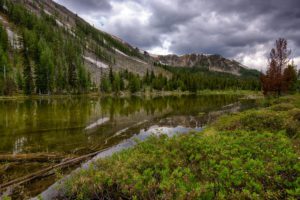April 1, 2021
Contacts:
Deborah Moskowitz, President, Resource Renewal Institute (415-928-3774)
Chance Cutrano, Director of Programs, Resource Renewal Institute (312-403-3702)
Laura Cunningham, Western Watersheds Project (775-513-1280)
Jeff Miller, Center for Biological Diversity (510-499-9185)
POINT REYES STATION, Calif. The National Park Service (NPS) has issued a press release revealing that 152 Tule elk, one-third of the Tomales Point herd, died at Point Reyes National Seashore. The deaths occurred because elk were trapped behind an 8-foot fence that encloses the park’s Tule Elk Reserve, where the NPS confines the rare elk to keep them off parklands reserved for cattle.
The Seashore’s elk population declined from a year ago from 445 to 293, allegedly due to drought. No cows reportedly succumbed. The NPS declared the die-off a “natural” event, a population “fluctuation” in response to “available resources.” However, the presence of the fence is the only explanation for the Tomales Point elk die-off; the free-roaming elk in the park at Limantour declined only 5% and the Drakes Beach herd population remained stable during the past year.
“There’s nothing ‘natural’ about fencing in wild animals and denying them adequate food and water,” said Deb Moskowitz, president of Resource Renewal Institute in Mill Valley, California, one of three organizations that sued the NPS in 2016 after it was disclosed that 250 of the park’s Tule elk had died. “This isn’t an act of God. It’s NPS official policy.”
“The NPS provides grass and water for cattle, but wildlife must fend for itself. Tragically, we can expect more elk to suffer and die this summer if the Park Service continues to do nothing,” she added.
In October 2020, park visitors and wildlife advocates alerted the NPS at the Seashore that most of the water sources in the elk reserve had dried up, offering photos of several elk carcasses as evidence. The NPS dismissed the concerns and insisted there was sufficient water for the elk in seeps and springs within the elk enclosure. In its press release yesterday, the NPS did not indicate when the 152 elk deaths occurred, but attributed them to a lack of available forage.
“The Tomales Point elk fence blocks these wildlife herds from migrating out of a narrow spit of land to find better forage and fresh water,” noted Laura Cunningham, California Director at Western Watersheds Project. “During the ongoing drought, we have been advising the Seashore that the Tule elk cannot extract enough metabolic water from dry forage to make up for the lack of adequate free water in existing stock ponds and seeps. These rare California native elk deserve better care in a national park unit.”
“The forced confinement of wild elk during a severe drought to a peninsula known to have inadequate food and water is reprehensible,” said Jeff Miller, a senior conservation advocate with the Center for Biological Diversity. “The Park Service didn’t remove a single cow from Point Reyes’ overgrazed grasslands during this severe drought, so of course there is very little forage left for the free-roaming elk and other wildlife. The Tomales Point elk fence must immediately be torn down so these elk can survive.”
In 2015 the NPS belatedly confessed that half the confined Tomales Point Tule elk herd—some 250 animals—had died during the 2012-2015 drought. Three nonprofit organizations—Resource Renewal Institute, Center for Biological Diversity and Western Watersheds Project—sued the National Park Service over plans to shoot or remove Tule elk and failure to evaluate the environmental damage from cattle grazing.
“If you lock up wild animals, you replace Mother Nature in being responsible for their well-being,” said Jim Coda, a retired attorney for the National Park Service. “It becomes your responsibility to provide adequate food and water. It’s no different than operating a zoo. In fact, it is a zoo.”
For decades, the NPS and ranchers had negotiated cattle leases on parklands purchased by and for the public. The lawsuit was meant to give the public a voice—and a choice. Should ranching continue at the Seashore and, if so, under what conditions? The legal settlement committed the NPS to provide the first-ever Environmental Impact Statement for ranching in the park and to accept public comments to its plan.
The preferred alternative in the General Management Plan Amendment (GMPA) that ranchers lobbied for, county officials endorsed and the Trump Administration fast-tracked, is under review by the California Coastal Commission and ultimately must be approved by the Department of Interior. The preferred alternative guarantees Seashore ranchers at least 20 more years in the park, more livestock, crops and other income streams to offset declines in beef and dairy consumption that portend hard times for the park’s ranchers.
Average rainfall at Point Reyes Seashore has decreased by ten inches since 2005. In late 2020, the NPS issued emergency permits allowing dairy farmers in the Seashore to pump water from creeks and wetlands. The permits, obtained under the Freedom of Information Act, highlight potential impacts to wildlife and habitats from the extraction of 10,000-15,000 gallons of water per day for cattle operations.
Though the GMPA discusses additional wells to meet the demands of more livestock and commercial crops, there is no data on the status of groundwater at the park. The NPS has not analyzed the environmental impacts of the pumping from the wetlands.
The NPS hasn’t tested water quality at the park ranches since 2005. Ranchers do the water testing themselves. They aren’t required to report the data to the NPS. An independent testing lab in January, 2021 found extremely high fecal coliform in waters draining the ranches, some showing 40 times the allowable limit for E. coli, which can cause intestinal distress and even life-threatening kidney failure, and up to 300 times the allowable limit for enterococci, which is also dangerous to human health.
NPS has said it won’t intervene as the Tule elk die off was from what it considers “natural” causes. Its proposed plan calls for shooting healthy elk to alleviate grazing competition with commercial beef and dairy cattle, which outnumber elk in the park ten to one.
Cattle roam and defecate at Drakes Estero—a federally designated wilderness area. Johnes’ Disease, a fatal wasting disease found in the cattle, has “jumped” species and infected the elk.
Cattle are the largest source of greenhouse gases in the Seashore, where drought, wildfires and sea-level rise push struggling species toward extinction. Visitation to the park has risen as the demand for outdoor recreation mounts in response to Covid-19 restrictions.
“Public health and preserving the national park and wildlife “unimpaired” for the generations, as the mission of the NPS states, has taken a back seat to ranchers’ bottom line,” says Chance Cutrano, Director of Programs for the Resource Renewal Institute. “The Park Services’ dutiful negligence will not be forgotten. The Park Service will be held accountable.






